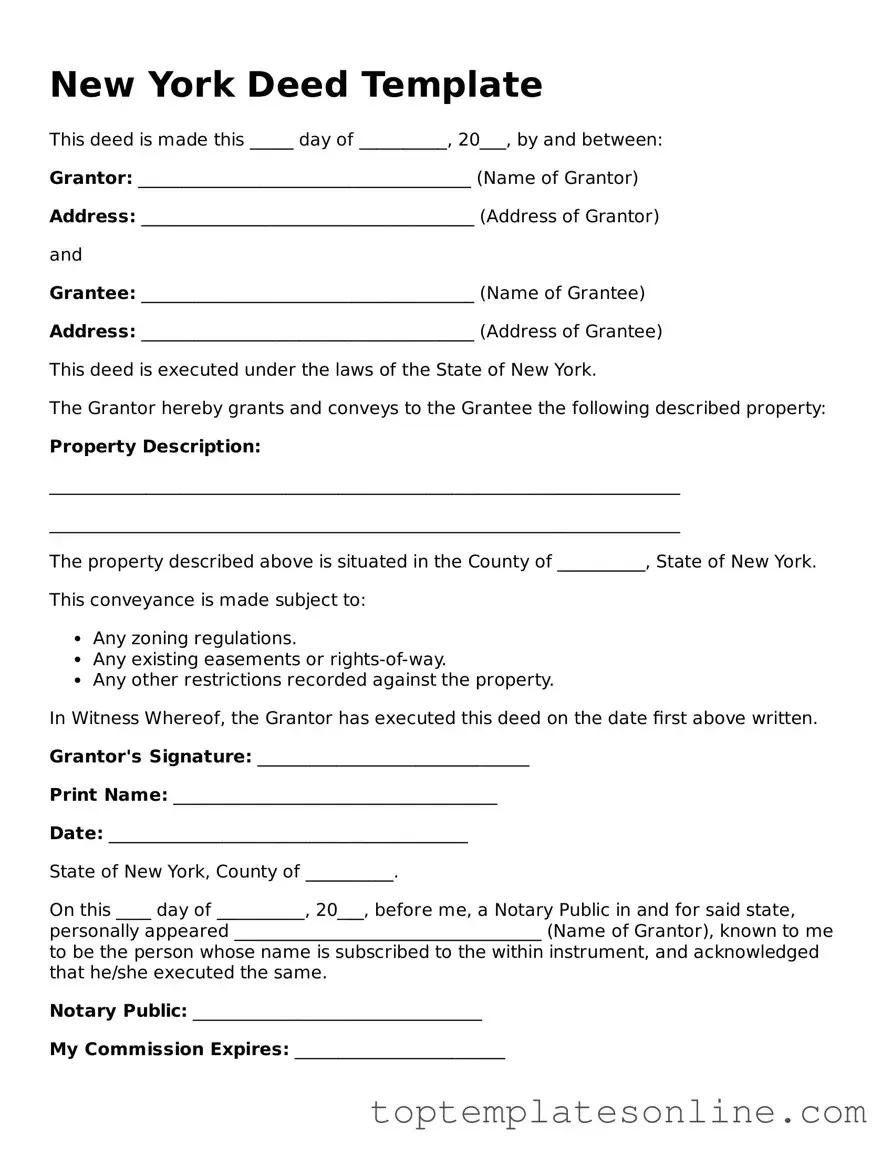Blank Deed Template for New York State
A New York Deed form is a legal document used to transfer ownership of real property from one party to another. This form outlines the details of the transaction, including the names of the parties involved and a description of the property. Understanding this form is essential for anyone looking to buy or sell real estate in New York.
Customize Deed Here
